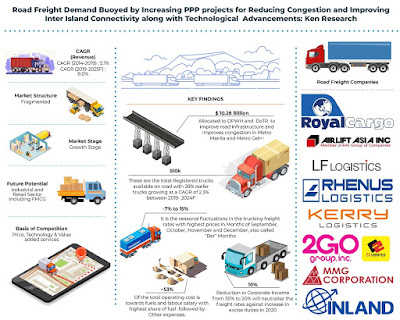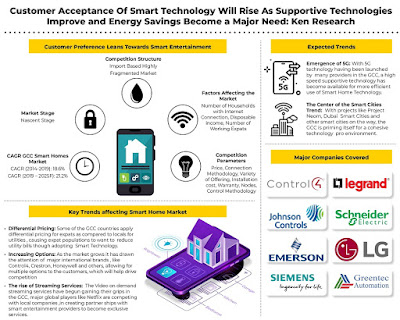The government decided to extend the lockdown to the 3rd of May, and this period has brought out the incapacity of supply chains in India to deal with a crisis situation. The warehousing industry is facing the problems of lack of availability of labour, lack of demand from the non-essential goods, and an overall slowdown in growth prospects. In such a scenario, the investments are expected to take a hit and so are the revenues.
Overall Economic Impact on India
FY21 Growth Pegged to be the Slowest Since LPG Reforms in 1991
The pandemic has struck at a particularly unfortunate time when India's economy is slowing down. Growth in FY20 is estimated to be around 4.8%-5%, and according to the South Asia Economic Focus report by the World Bank, the economy is expected to grow 1.5%-2.8% in FY21. In fact, multiple international bodies have forecasted a slowdown in the growth of the Indian economy. During the lockdown period, a less than quarter of the Indian economy is operational. 53% of Indian businesses have indicated an impact of COVID-19 on business operations, according to a FICCI survey. Around 42% of the respondents said that it could take up to three months for normalcy to return, after the lifting of the lockdown. The major sectors impacted are transport, hospitality, and real estate.
Foreign Trade to Take a Massive Hit
Exports in the country are expected to suffer massively as demand dies in trading partners of India who are the hardest hit by the coronavirus, countries such as China, Spain, Italy, Japan, South Korea, the US, and Iran. Exports to these countries are now limited to only essential commodities with exports contracting by 34.6% in March 2020. China reopened its manufacturing units after temporarily shutting them down, providing a bit of relief to industries that are dependent on the country for imports of raw materials.
Lockdown’s Impact on Warehousing Sector
Lockdown to Delay Further Investments; Leaving Many Warehouses Underutilised
Investments to Dry Out
According to Knight Frank Research, over $ 6 billion have been invested in the warehousing sector by PE funds, pension funds, and REITs, since 2017. The investment was only expected to increase in FY21 prior to the pandemic, with the warehousing sector seen as something of a diamond in the rough of the real estate sector in India. With the country reeling from the lockdown the investment prospects are looking bleak. Institutional investors are likely to monitor the situation and assess the profitability of their current portfolio before making further commitments. The ban on construction activities, the lack of availability of manpower, and imported construction materials means that the market may still be dampened even after the lifting of the lockdown. The resultant loss in business may force domestic and foreign institutional funds to lend at 19-20% post COVID from the current 15-17% to cover the same. This will undoubtedly adversely affect the capacity addition in the warehousing market, with the rate expected to behalf during the period FY19-FY24 as compared to FY14-FY19.
Revenue Realisation to Take Major Hit
The government only allowing the transportation and logistics services related to the provision of essential commodities is forcing many warehouses to be underutilized. Occupancy rates are the major factor of revenue the realization of a warehouse. With the ban on the storage of non-essential commodities, the revenue realization of warehouses is expected to undergo a major hit. The government has declared that logistics services for non-essential goods and e-commerce will be allowed from 20th April but the situation is not expected to get better till H2 FY21, due to the many factors like low EXIM, and the slowdown in manufacturing immediately post the lockdown.
Short Term Impact on Business in the Warehousing Industry
Industry Anticipated to Feel Stressed till Manufacturing Picks Up
The warehousing industry is anticipated to fuel the stress of the lockdown until the time the domestic manufacturing is not returned to pre-lockdown levels. The warehousing industry is expected to contract by around 15% in FY21 due to lack of demand in H1 FY21, and the slow pickup of non-essential items sectors such as automobiles and auto ancillary, cement, consumer durables, and engineering. The industry will also be impacted by the reduction in foreign trade, especially in Indian exports, and the slow return of normalcy of EXIM levels. With the lockdown being partially lifted on the 20th of April, and trucking and logistics services being permitted for all commodities since 30th March, the warehousing industry is expected to reduce its losses a bit during this period.
The situation is anticipated to get better with stimulus packages by the government, regaining of consumption demand at large due to positive consumer outlook, and restoring of manufacturing production to pre-lockdown levels. The industry is expected to pull off a moderate recovery in H2 FY21, with the regaining of growth starting in FY22.
Key Segments Covered: -
Freight Forwarding Market
By Revenue by Mode of Transportation
Road Freight (Volume and Revenue)
Rail Freight (Revenue)
Sea Freight (Revenue)
Air Freight (Revenue)
Warehousing Market
Space by Business Model
Industrial/Retail
CFS/ICD
Cold Storage
Agriculture
Warehousing Space by Region
NCR
Mumbai
Bangalore
Pune
Chennai
Kolkata
Hyderabad
Ahmedabad
Others
Space by End User
3PL
E-Commerce
Retail
Engineering & Manufacturing
Electronics
Others
Cold Chain Market
Revenue by Service
Cold Transportation
Cold Storage
Revenue by Temperature Range
Freezers
Chillers
Ambient
Snapshot on Co-Packing Market in India
Companies Covered
TCI
Agarwal Packers and Movers
Varuna Group
Gati
VRL Logistics
Blue Dart
DTDC
Safexpress
NTC Logistics India
KerryIndev Logistics
Stellar Value Chain
Shree Shubham Logistics
Central Warehousing Corporation
Avvashya CCI
Rhenus Logistics
Avanthi Warehousing Services
ATR Warehousing
Snowman Logistics
Coldman Logistics
ColdStar Logistics
ColdEx
Gubba Cold Storage
Crystal Group
Key Target Audience
Freight Forwarding Companies
E-Commerce Logistics Companies
3PL Companies
Consultancy Companies
Logistics/Warehousing Companies
Real Estate Companies/ Industrial Developers
Time Period Captured in the Report: -
Historical Period – 2014-2019
Forecast Period – 2020-2024F
Key Topics Covered in the Report: -
Indian logistics industry analysis
Major Road Freight Companies in India
India Logistics Market Size
India Transportation market Growth
India Warehousing Market End Users
India Cold Transportation Market
GST Rate on Warehousing and Road Transport Services
Road Freight Industry Operations in India
India Exports Volume in Percentage
Technology Innovation in Logistics Market India
Operating Cost of a Truck in India
Impact of BS-VI Norms on Trucking Industry in India
Business Models in the Warehousing Industry
Digital Aggregators in Warehousing in India
Price of Chiller Cold Storage in India
Price of Freezer Cold Storage in India
Number of Pallet Positions in India
India Freight & Logistics Market
COVID-19 Impact on Indian Trucking Industry
Agarwal Packers and Movers Market Share
For More Information on the research report, refer to below link: -
Related Reports by Ken Research: -
Contact Us: -Ken Research
Ankur Gupta, Head Marketing & Communications
Ankur@kenresearch.com
+91-9015378249
Ankur Gupta, Head Marketing & Communications
Ankur@kenresearch.com
+91-9015378249




